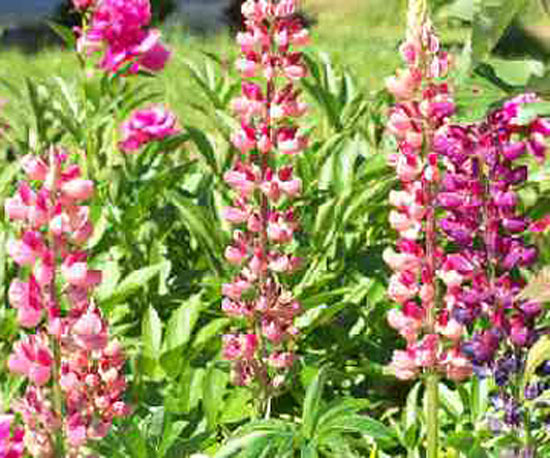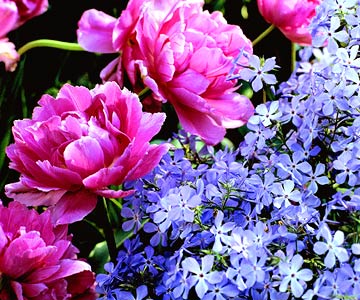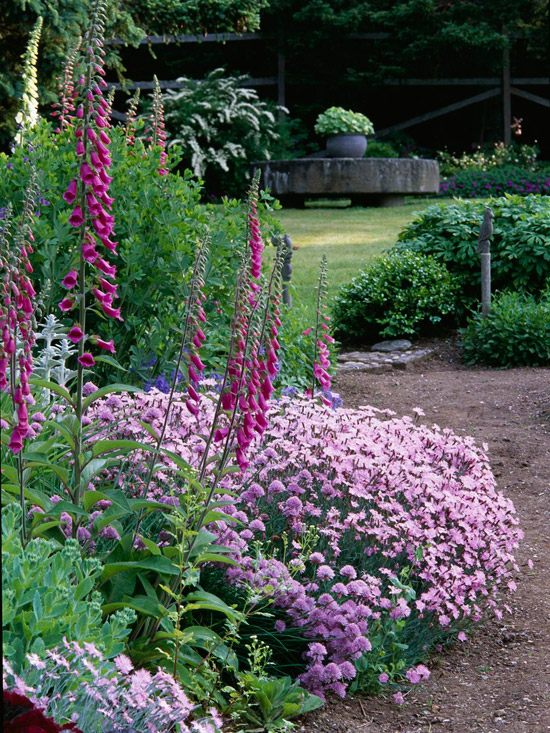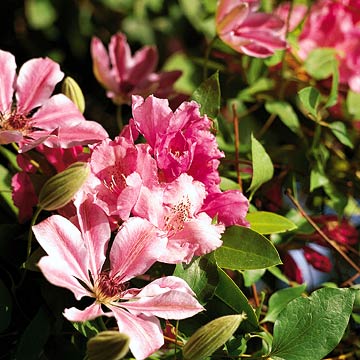





 Foxglove
Foxglove
The many faces of pink range from the barely-there blush that tints spring crabapple blossoms to the throbbing magenta found in dianthus, portulaca, and hibiscus. If a delicate pink flower in your border deserves more attention, plant it next to white. White spotlights even the palest hues.
Look also on the lighter side of the pink spectrum for effective linking colors. Puddles of light pink enrich adjacent deep blues, golden yellows, and deep cerise pink. The one richly saturated color that doesn't benefit from pink is red. A side-by-side contrast of the two colors ends up looking flat. But if the pink has a peachy cast with tints of yellow, then adjacent red flowers will pop visually.
See more of our favorite pink flowers.
 Peonies and woodland phlox
Peonies and woodland phlox
Use silver foliage as a partner for pink to separate more intense hues in a long flower border. One of pink's most effective harmonies occurs with blues of all shades. Pale hues of pink and blue merge in mauve. Find it in varieties of monkshood, delphinium, hellebore, and lilac. Mauve looks muddy unless woven skillfully into the garden. Deep, saturated pinks, violets, and dark blue help clarify and define mauve; silver sidekicks set off its satiny sheen.
Pink invariably hits it off visually with green. A green, white, and pink planting trio provides instant refreshment. Looking for a good match for hot pink? Try equally jazzy versions of green: lime green or yellow-green. Think magenta zinnias paired with bells of Ireland.
Love pink flowers? Try red varieties with these plant suggestions.

 'Nelly Moser' clematis and'Antoon van Welie' rhododendroncontribute vibrant pinks to thisspring garden.
'Nelly Moser' clematis and'Antoon van Welie' rhododendroncontribute vibrant pinks to thisspring garden.
Related Feature: One-Color Gardens
See more great pink flowers.
Copyright © www.100flowers.win Botanic Garden All Rights Reserved